为产品选择合适的工业传感器
投稿人:DigiKey
2024-10-22
工业传感器能将物理参数转换为用于各种应用的信号,使其在工业环境中发挥着至关重要的作用。那么,设计人员如何确保为产品选择合适的工业传感器呢?
工业传感器用于监控、测量和检测工业环境中的环境或运行条件变化。这些传感器可将温度、压力、振动、接近情况、光线、湿度或化学特性等物理变量转换为信号,供系统或控制器进行测量、分析或监控。这些传感器收集的数据对于在制造、能源、汽车、航空航天等各个领域实现过程自动化、提高安全性和效率极为重要。
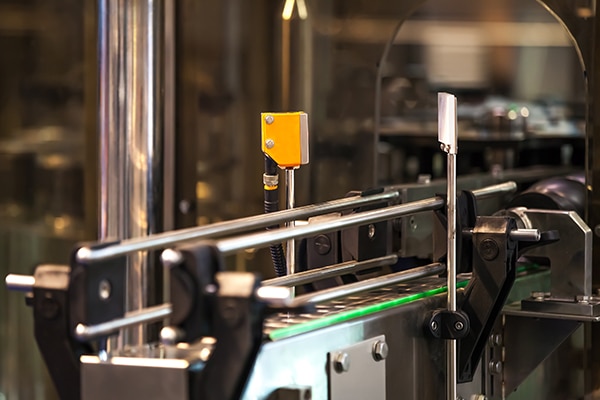 图 1:工厂内安装的直线传送带上的光学传感器。(图片来源:Adobe Stock)
图 1:工厂内安装的直线传送带上的光学传感器。(图片来源:Adobe Stock)
工业传感器的关键作用
工业传感器所发挥的关键作用不容低估,这些设备对于实现工业环境中的自动化、安全、质量控制措施等尤为重要。
工业传感器是过程自动化不可或缺的部分,可使机器和系统在运行时只需极少的人为干预。这些设备有助于确保装配线、机器人系统和包装流程等操作的精确性和一致性。
通过监测振动、温度或压力等设备状况,传感器可针对潜在设备故障提供早期预警信号,从而实现预见性维护并减少计划外停机时间。
传感器还能通过监测温度、压力和尺寸精度等变量,确保生产流程符合规定的标准。例如,光学传感器可以测量产品尺寸,以确保质量保持一致性。
在危险环境中,这些功能可以成为检测不安全状况的关键(如气体泄漏或过热等),并触发警报或安全机制,以防止事故发生。
同时,通过监测温度、能源用量或液位等因素,传感器有助于优化过程,减少浪费和能耗。
此外,工业传感器还能实时监控各种工业过程,从而将数据输入控制系统进行及时调节和优化,并帮助确保平稳、高效的运行。
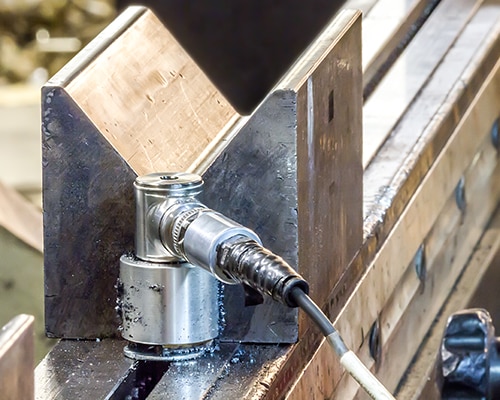 图 2:利用磁性检测振动的传感器。(图片来源:Adobe Stock)
图 2:利用磁性检测振动的传感器。(图片来源:Adobe Stock)
为产品寻找合适工业传感器带来的烦恼
面对种类繁多的工业传感器,为产品选择合适的工业传感器往往是一项复杂的任务。
为工业传感器获取清晰、全面的文档便是主要困难之一。不同制造商提供的信息通常详尽程度不同,因此很难直接比较传感器规格。这类文档有时可能过于技术化或缺乏实用信息,使人难以理解传感器如何与现有系统集成或在特定条件下运行。此外,在某些情况下,产品文档可能因为没有更新而不能反映更新的型号或者固件更新情况,或者在制造商的网站上也很难找到产品文档。
工业环境中通信协议的多样性往往也是选择传感器时的另一个痛点。工业环境可能依赖各种协议,如 Modbus、PROFINET、EtherNet/IP 或其他协议。有些传感器可能不支持某些协议,导致与现有控制系统不匹配,或需要进行昂贵、耗时的修改。此外,还要解决互操作性问题,确保所选传感器能与现有硬件和软件有效通信极其重要。在某些情况下,可能需要额外的硬件(如网关或转换器)才能使传感器与系统兼容,从而使集成工作变得更加复杂。
与 IO-Link 集成是另一个问题点,因为该通信标准对于传感器和执行器来说相对较新。虽然该协议的优势巨大,但要采用该协议也会遇到一些挑战。陡峭的学习曲线、有限的知识资源以及与传统系统的集成只是其中的一些挑战。
最后,还存在一个问题,那就是如何找到一家所需传感器有足够库存的经销商。对于采用精益库存模式或需要及时生产的行业来说,这是一项尤为紧迫的挑战。
值得庆幸的是,DigiKey 在工业传感器市场中脱颖而出,可提供来自行业领先供应商的各种高质量传感器。本文将对此作进一步探讨。
 图 3:自动化机器视觉检测工具中使用的光学传感器。(图片来源:Adobe Stock)
图 3:自动化机器视觉检测工具中使用的光学传感器。(图片来源:Adobe Stock)
选择工业传感器时应优先考虑的事项
在选择工业传感器时,遵循结构化的决策层次可简化流程,并确保所选传感器符合应用要求。一般来说,可遵循的决策层结构如下所示:
- 传感器类型 - 传感器需要检测什么?
- 传感器认证 - 传感器是否需要遵守任何特定的认证或标准?
- 通信能力 - 传感器是否具备与现有自动化基础设施通信的能力?
- 库存和供货能力 - 传感器是否随时可用、交付周期有多长、是否提供支持服务?
- 价格 - 从初始成本、总拥有成本和投资回报率的角度看,传感器的价格对项目来说是否具有成本效益?
在选择工业传感器时,遵循这一结构可以帮助客户缩小选择范围,找到最合适的传感器。这些传感器既能满足技术要求、符合认证要求、成功集成、随时可用,又能为用户节省成本。
DigiKey 提供的产品
DigiKey 提供各种不同的工业传感器,几乎能满足所有需求。其磁性、接近、压力和光学传感器产品种类繁多,涵盖 SICK、Honeywell、Banner Engineering、Pepperl+Fuchs、Endress+Hauser 等知名品牌。
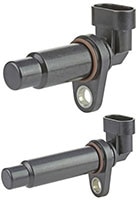 图 4:Honeywell 的 SNG-SPRC-002(上)和 SNG-SPRD-004(下)。(图片来源:Honeywell)
图 4:Honeywell 的 SNG-SPRC-002(上)和 SNG-SPRD-004(下)。(图片来源:Honeywell)
Honeywell 的 SNG-S 系列速度传感器是 DigiKey 磁性传感器系列的典型产品,采用专门设计的 IC 和永久磁铁、坚固耐用的探针型封装。该系列传感器可检测到磁铁在靠近铁金属时磁通密度的变化,并提供频率与齿轮速度成正比的数字脉冲输出。传感器的性能取决于靶材料、几何形状、速度、传感器/目标间隙和温度等因素。SNG-S 系列具有从 -40°C 到 +140°C 不等的宽工作温度范围,对装配过程中的角度旋转不敏感,环境密封等级为 IP69K。此外,该系列还具有强大的电气抗噪能力(额定值为 100 V/m)、零速检测、0 Hz 至 15 kHz 的高频开关能力,以及用于可靠安装的 O 形密封圈。该系列传感器兼容 4.5 V 至 24 V 的电源电压,并通过了 CE 认证。
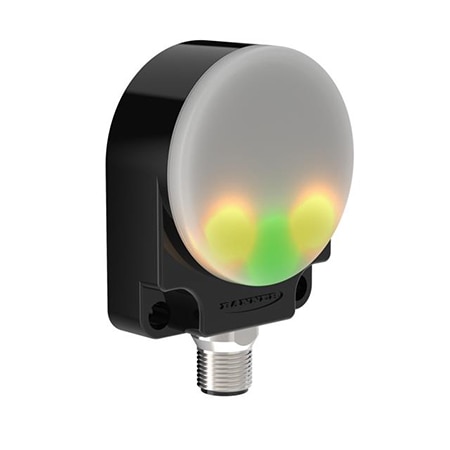 图 5:Banner Engineering 的 K50RF-8060-LDQ 雷达传感器。(图片来源:Banner Engineering)
图 5:Banner Engineering 的 K50RF-8060-LDQ 雷达传感器。(图片来源:Banner Engineering)
Banner Engineering 的 K50R R-GAGE 雷达传感器系列是 DigiKey 广泛的接近传感器系列之一,该系列能为室内和室外环境提供坚固耐用、经济高效的解决方案。该系列传感器包括精度可与超声波传感器媲美的 40° x 30° 型器件,以及涵盖领域更广的 80° x 60° 型器件。这些传感器是自动导引车 (AGV)、油箱液位管理和电动汽车充电站车辆检测等应用的理想之选。K50R 系列可通过 Banner Measurement Sensor 软件进行简单集成,可提供离散和模拟双输出选项,并配有各种安装配件,因此安装灵活。这类传感器的防护等级为 IP67,可抵御雨、雪、雾、蒸汽的侵袭,抵御风吹日晒,从而确保在任何环境下都能出色地工作。这类传感器防尘、耐污、耐蒸汽且温度效应极小,可实现稳定的测量,并具有 5 m 宽的测量范围和 50 mm 的短死区。此外,由于不存在串扰,因此可将多个这类传感器近距离安装,而不会产生串扰。
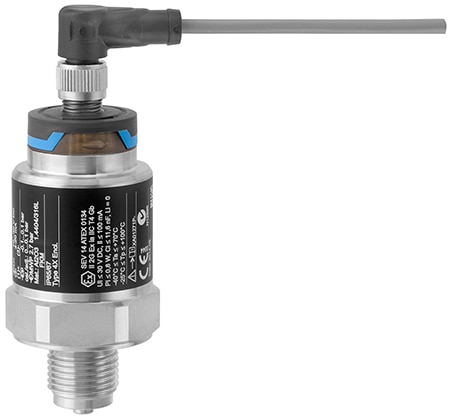 图 6:Endress+Hauser 的 Cerabar PMC21 系列紧凑型压力变送器。(图片来源:Endress+Hauser)
图 6:Endress+Hauser 的 Cerabar PMC21 系列紧凑型压力变送器。(图片来源:Endress+Hauser)
Endress+Hauser 的 Cerabar PMC21 系列紧凑型压力变送器采用陶瓷无油传感器。该系列经久耐用,抗压力冲击。其陶瓷电池在低压和真空应用中性能出色。PMC21 系列可测量 100 mbar 至 40 bar 的绝对压力和表压。该系列主要通过 4 mA 至 20 mA 信号进行通信,通过 M12 或阀门插头连接。传感器范围和过程连接应根据具体应用需求进行定制。该系列变送器专为要求苛刻的过程工业环境而设计,具有高达 IP68 的侵入防护等级、经久耐用的 Ceraphire 膜和 316L 不锈钢外壳。该系列通过了多种认证,包括危险区域和船舶认证,使其适用于各种各样的应用。该系列使用方便、性能卓越、长期稳定,而且材料质量上乘,让用户受益匪浅。
DigiKey 还为客户提供了一系列出色的光学传感器,如 Pepperl+Fuchs 的 VOC 工业事件相机、SICK 的 CLV69x 系列器件。
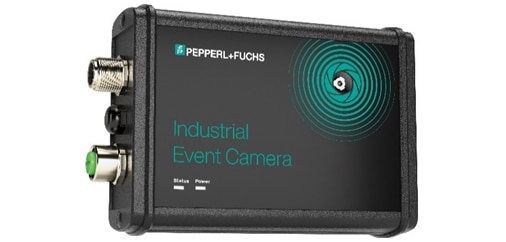 图 7:Pepperl+Fuchs 的 VOC10M-F256-B12-V1D-CR03 传感器。(图片来源:Pepperl+Fuchs)
图 7:Pepperl+Fuchs 的 VOC10M-F256-B12-V1D-CR03 传感器。(图片来源:Pepperl+Fuchs)
Pepperl+Fuchs 的 VOC 工业事件摄像机设计用于在触发信号前后记录长达 60 s 的事件驱动型视频,以便进行有针对性的远程诊断和自动记录。当发生故障、预定义状态或过程时,摄像机会捕捉视频,并自动打上时间戳,还可通过用户数据报协议接口进行动态文本叠加,使文件检索更加快捷方便。该器件是监控自动化高架仓库和安防应用的理想之选,具有用于访问视频文件和进行直播的网络接口、用于自动录制的视频环形缓冲器,以及通过 UDP、REST API 或数字硬件输入进行集成的触发器。这款摄像机支持 0.05 m 至无限远的安装距离,分辨率高达 1280 x 720(高清),可在 8 GB microSD 卡上最多存储 10,000 个事件。该摄像机的工作电压为 18 VDC 至 28 VDC,使用 TCP/IP、HTTP、FTP 和 RTSP 等协议,防护等级为 IP65。
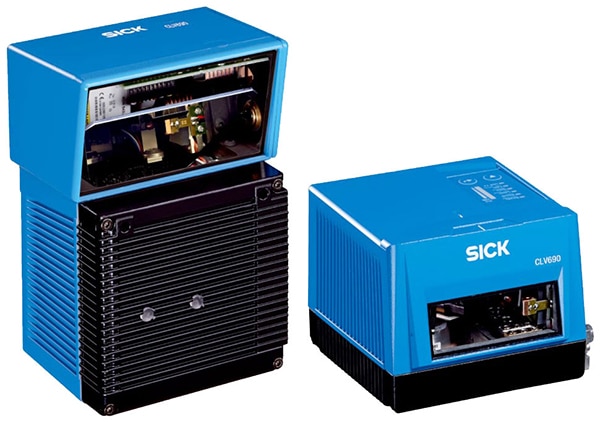 图 8:SICK 的 CLV690-1000(左)和 CLV691-0000(右)。(图片来源:SICK)
图 8:SICK 的 CLV690-1000(左)和 CLV691-0000(右)。(图片来源:SICK)
SICK 的 CLV69x 系列条形码扫描仪内置 SMART+ 代码重建技术,即使条形码受到污染和损坏,也能读取信息。这些固定安装式一维条形码扫描仪具有卓越的读取和高速处理性能以及高精确度,其自动对焦特性使用内置距离测量功能,可在扫描区域内读取与高度无关的条形码。此外,具有用户友好型界面的 SOPAS ET 操作系统可确保进行简单的参数化。通过集成跟踪功能,该扫描仪可以管理标准应用,而无需增加系统控制器。该扫描仪采用创新型连接功能(包括内置参数存储),方便快速更换扫描仪以及轻松集成到各种应用中。主要功能包括用于大景深的实时自动对焦、灵活的克隆插头技术、CAN、以太网和串行通信,以及高级分类、过滤和逻辑功能。集成式 LED 条形图和按钮提高了可用性。
结束语
DigiKey 提供种类繁多的工业传感器,可确保客户找到适合其特定需求的产品,为自动化领域带来无与伦比的价值。SICK 和 Banner 以其先进的传感器和对物联网集成的创新贡献而著称。Pepperl+Fuchs 在传感器通信领域表现出色,而 Endress+Hauser 的优势是测量仪器,尤其在压力和流体测量检测方面处于领先地位。尽管 Honeywell 是一家规模较小的公司,但其提供的特种传感器扩大了 DigiKey 的多样化产品组合,其产品范围比任何竞争对手都要广泛。

免责声明:各个作者和/或论坛参与者在本网站发表的观点、看法和意见不代表 DigiKey 的观点、看法和意见,也不代表 DigiKey 官方政策。









